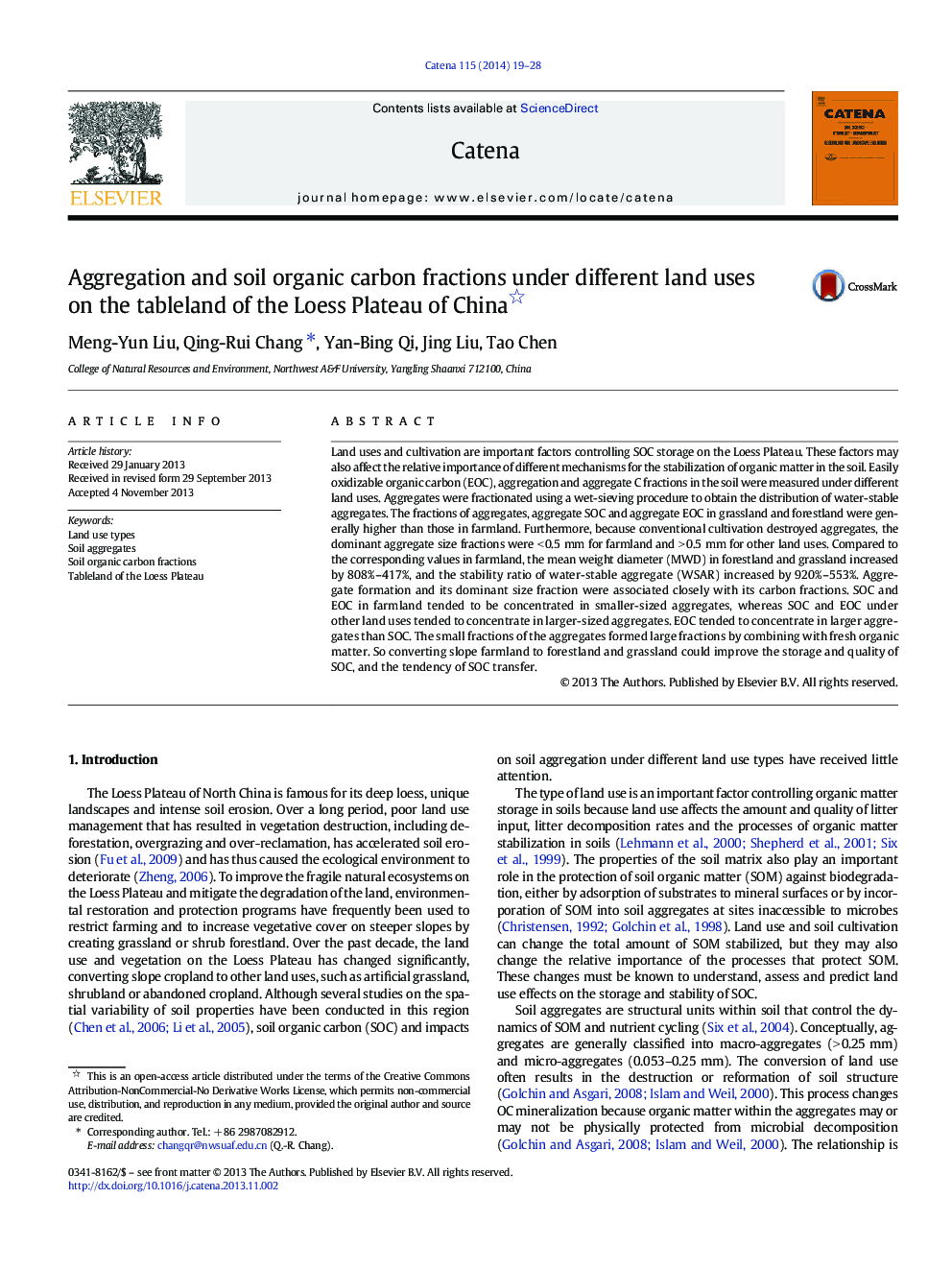| Article ID | Journal | Published Year | Pages | File Type |
|---|---|---|---|---|
| 6408092 | CATENA | 2014 | 10 Pages |
â¢Aggregates SOC and EOC in grassland and forestland were higher than in farmland.â¢In aggregate fractions, in farmland dominant size was < 0.5 mm, in others > 0.5 mm.â¢SOC and EOC in farmland concentrated in < 1 mm macro-aggregates, in others in > 1 mm.â¢EOC tended to concentrate in larger aggregates than SOC.â¢Converting cropland to others could improve the storage and quality of SOC, trend of SOC transfer.
Land uses and cultivation are important factors controlling SOC storage on the Loess Plateau. These factors may also affect the relative importance of different mechanisms for the stabilization of organic matter in the soil. Easily oxidizable organic carbon (EOC), aggregation and aggregate C fractions in the soil were measured under different land uses. Aggregates were fractionated using a wet-sieving procedure to obtain the distribution of water-stable aggregates. The fractions of aggregates, aggregate SOC and aggregate EOC in grassland and forestland were generally higher than those in farmland. Furthermore, because conventional cultivation destroyed aggregates, the dominant aggregate size fractions were <Â 0.5Â mm for farmland and >Â 0.5Â mm for other land uses. Compared to the corresponding values in farmland, the mean weight diameter (MWD) in forestland and grassland increased by 808%-417%, and the stability ratio of water-stable aggregate (WSAR) increased by 920%-553%. Aggregate formation and its dominant size fraction were associated closely with its carbon fractions. SOC and EOC in farmland tended to be concentrated in smaller-sized aggregates, whereas SOC and EOC under other land uses tended to concentrate in larger-sized aggregates. EOC tended to concentrate in larger aggregates than SOC. The small fractions of the aggregates formed large fractions by combining with fresh organic matter. So converting slope farmland to forestland and grassland could improve the storage and quality of SOC, and the tendency of SOC transfer.
